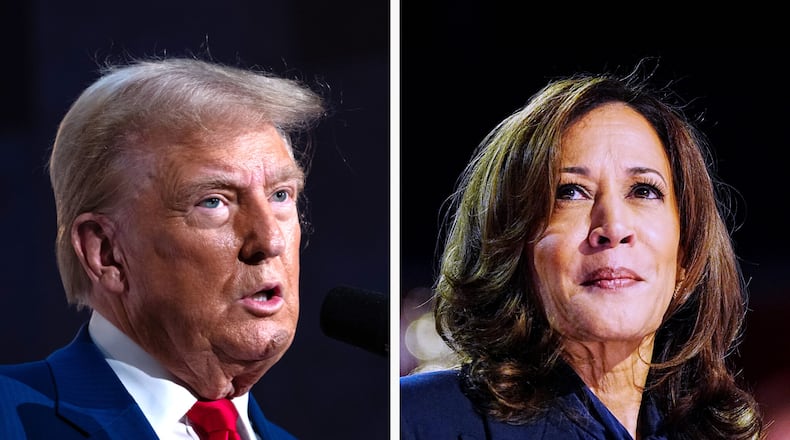Vice President Kamala Harris’ campaign and supporting political action committees have booked $7.1 million more in advertisements in Georgia than former President Donald Trump and his supporters, with most of this difference in upcoming radio spots, according to an Atlanta Journal-Constitution analysis of Ad Impact data.
In the next three weeks, $31 million in ads supporting Harris are planned across Georgia’s digital, radio and television platforms. While the two campaigns have spent similar amounts on upcoming television ads, Harris’ campaign and supporters booked $6.5 million more than Trump’s in radio ads.
Most of Harris’ edge on radio spending comes from a bigger investment in Atlanta.
Democrats have pulled ahead of Republicans on digital ad spending on ads that have been published since the beginning of the year.
This investment in digital platforms signals that Harris is hoping to mobilize young voters, who do not typically turnout at high rates, said Lara Wessel, a political scientist at Georgia Southern University.
“I noticed that one strategy that Harris is using is putting ads a lot more on social media sites,” said Wessel. “It’s a pretty direct attempt to appeal to younger voters.”
Eric Jones, a 32 year-old voter in Cherokee County, said he most often encounters Harris ads online and Trump ads in the mail. “The algorithm on Instagram and Facebook … tends to know what I’m more interested in, so the ads are targeted to me,” he said.
While spending on online ads supporting Harris has risen in Atlanta, it has dropped in the city for those supporting Trump.
The ad spending illustrates how competitive the race is in Georgia, especially after the state flipped and voted for Democrat Joe Biden during the 2020 election.
“They’re fighting over this very small slice of voters,” said Geoffrey Sheagley, a political scientist at the University of Georgia. “They kind of have to spend similar amounts to have any chance at those voters. So I think what we’re seeing is a reflection of the competitiveness more than anything.”
Ramilhey Brown, a 55-year-old voter in Henry County, encounters most political advertisements through television, the largest medium for advertisement spending in the data.
“I was like, wow, they’re really spending money on ads,” she said, noting that sometimes the same ad plays repeatedly. “I was like, at what point, you know, are we not tired of this?”
About the Author
Keep Reading
The Latest
Featured




